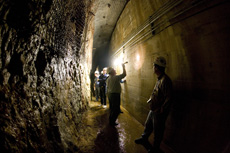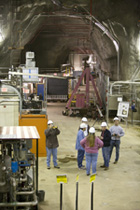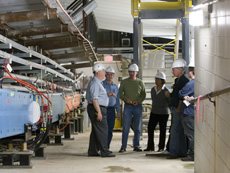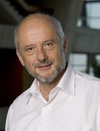Tom Prosapio retires Sept. 25
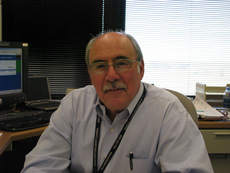
Tom Prosapio
Before groundbreaking discoveries can take place at Fermilab, someone has to break ground.
For the past 34 years, Tom Prosapio has been the man for the job.
Prosapio will retire at the end of September. He has coordinated the construction, outfitting and installation of equipment for laboratory facilities including the NuMI beamline tunnel for the Facilities Engineering Services Section / Engineering Department.
"Tom Prosapio's ability to manage multiple projects well and do whatever it took to ensure successful completion is a testament to his dedication to his work and this laboratory," said Randy Ortgiesen, head of Facilities Engineering Services Section.
Prosapio worked for nearly five years to move men and equipment 300 feet below ground to construct the 4,000-foot NuMI tunnel. "Not too many guys can say that they got to do that," Prosapio said. Prosapio said that the NuMI project was particularly exciting to work on because it brought a new level of construction discipline to the laboratory that had not been seen here before.
Prosapio coordinates with subcontractors, vendors and laboratory personnel to shepherd building construction from permit approval through the final inspections. "I just do what's necessary to support physics," said Prosapio.
Prosapio came to Fermilab from Argonne National Laboratory in 1973. "I heard there was a new accelerator in town," he said. At first, he worked as an electrical technician but after his work with contractors and users, he began to move more towards civil construction projects.
Prosapio spent seven years working on the Superconducting Super Collider Project in Texas until its termination in 1997. He then returned to Fermilab.
After he retires, Prosapio will move to his house in Bloomfield, Iowa, with his wife Karen. Those wishing to bid Prosapio farewell can join him for a buffet luncheon at 11:30 a.m. on Tuesday, Sept. 25, at the Venice Tavern in Batavia. Reservations can be made by calling Maria Martinez, x6598 or Odarka Jurkiw, x4405 by Sept. 19.
-- Haley Bridger
|
